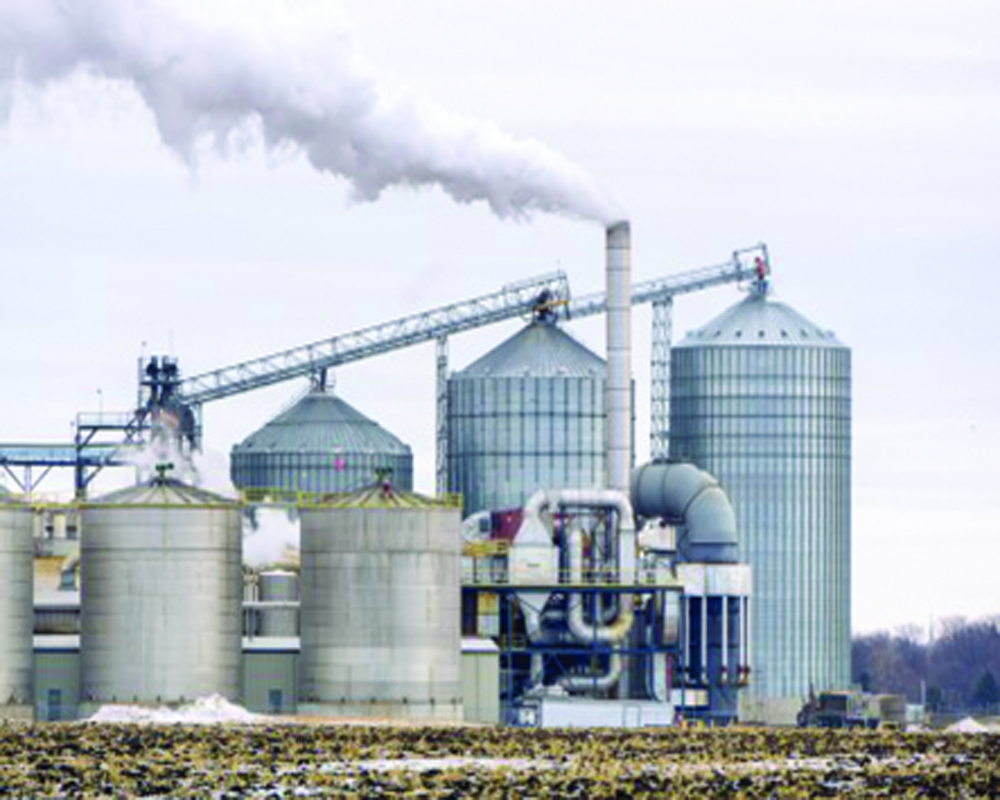Ethanol has a much shorter revenue cycle that can help the beleaguered sugar mills to pay farmers early and reduce the arrears burden
Sugarcane cultivation is limited to a handful of states, notably Uttar Pradesh, Maharashtra, and Karnataka, and is subject to a most complex mechanism of price fixation, procurement, and settlement of farmers' arrears.
Unlike the staple food grains, sugarcane is neither directly procured by the government agencies nor is the sugar inventory maintained by the Food Corporation of India (FCI) or the corresponding state government agencies.
In India, the sugarcane sector is highly regulated wherein the government determines the procurement price, minimum selling price (MSP) of sugar, monthly sale quota of mills, annual export volumes, etc. The global trade conditions have a direct bearing on the domestic sugar sector, thus affecting the cash flows to the over 500 mills in India.
Sugarcane is also the proverbial political hot potato with the opposition parties raising issues of procurement, payment of arrears, and pricing regularly in parliament and state legislatures, pushing the governments into a corner.
Sugar is traditionally the flagship by-product of cane but of late, ethanol has come into the reckoning to further enrich the value chain for more stable cash flows and consequent payment to farmers.
The vision of the Union government to achieve 20 per cent ethanol blending in fossil fuel by 2025 has paved the way for the ethanol industry to gain heft. It will not only result in greater investment in the sector but also ensure a lucrative market for the ethanol players, mostly mills.
The domestic sugarcane value chain is worth more than Rs 1 trillion annually with nearly 35 million farmers' families, including five million in UP, directly engaged in farming. Its primary by-products include sugar, ethanol, molasses, spirits, press mud, etc. More recently, hand sanitiser has also become a part of the product basket necessitated by the pandemic safety protocols.
Due to the cyclical nature of the sector and ever-fluctuating inimical export market conditions (which depress the domestic prices, squeeze exports), cane arrears have become problematic, especially in UP which is the country's top cane and sugar producer. Not surprisingly, some political parties owe their existence and subsistence to the sugarcane sector alone.
The industry laments that cane arrears are the result of the long cycle of production and sales. However, ethanol has a much shorter revenue cycle, which could come in handy for the beleaguered mills to pay farmers early and reduce the arrears burden.
The first step in the Centre's ethanol strategy is to blend 10 per cent ethanol by 2022. In 2020-21, oil marketing companies (OMCs) augmented blending to 8.5 per cent from the earlier five per cent. Likewise, ethanol procurement by OMCs nearly doubled to 3.3 billion litres (BL).
The Indian Sugar Mills Association says the 2022 target can boost ethanol production by 35 per cent from 3.33 BL in 2020-21 to 4.5 BL in the 2021-22 sugar season.
Assuming that the additional ethanol is derived solely (since ethanol could also be produced from other farm products such as maize, as also farm residue) from cane juice and B-heavy molasses (BHM), it is likely to translate into the diversion of additional 1.3 million tonnes (MT) of sugar in 2021-22 compared to the 2020-21 season. This would therefore keep at bay a potential sugar glut situation, and reduce the inventory costs of mills, thus improving their profitability ratio.
It is estimated that the diversion to ethanol will reduce sugar output by a total 3.4 MT in 2021-22 compared to 2.1 MT this year. However, a better picture of the diversion will emerge after the OMCs float their tenders for ethanol, and subsequent bids are placed by mills in the month of October.
After accounting for reduction in sugar output due to ethanol diversion, the domestic sugar production in 2021-22 is estimated at 31 MT - nearly the same as projected for the current season 2020-21.
These estimates are, however, subject to normal rainfall and other optimum conditions. After considering the rainfall in July-Sep 2021, the water situation in reservoirs, and the second set of satellite images in September-October 2021, ISMA will release its first advance estimates for 2021-22 in October 2021.
ISMA Director General Abinash Verma says: “The shorter demand cycle of ethanol would result in speedier cash flow to mills and thus speedier farm payments. The blending will also curb vehicular emissions to that extent since ethanol-blended petrol is more eco-friendly. Besides, it will reduce the country’s oil import bill too. The ethanol industry will create fresh jobs at the local level.”
(The writer is a Lucknow-based financial journalist. The views expressed are personal.)


























